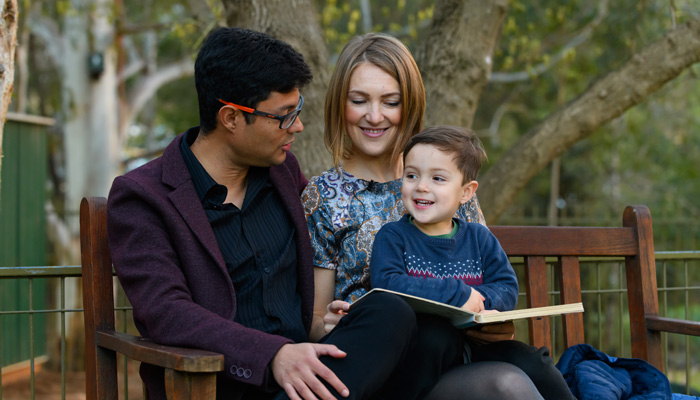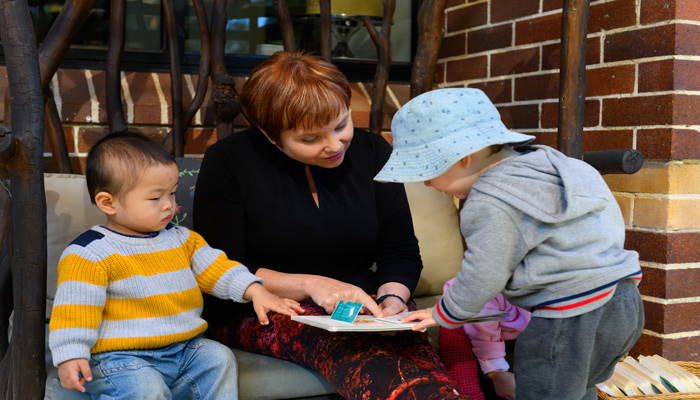As an ex primary school teacher and now in my university role, I often get asked by parents about educationally ‘right’ or ‘wrong’ things to do – how can I best teach my child at home? how much homework should he or she have? What about screen time … how much is too much? Why isn’t my child being taught like I was taught?
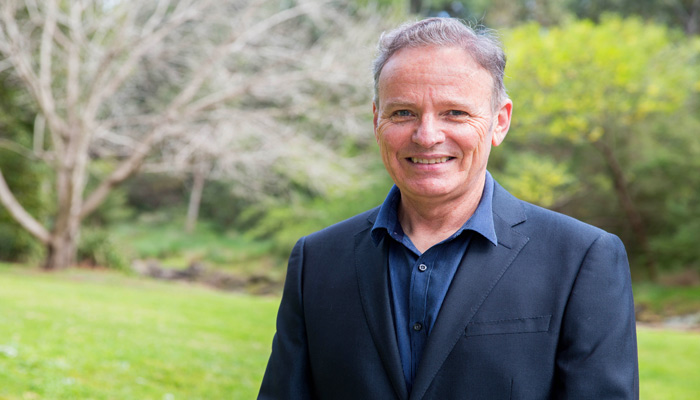
Professor Garry Falloon: "It’s just as important to understand how your child learns as it is to know what should be learnt".
There’s no doubt these are all important concerns for parents, but answering them is not easy. You may want to ask the question, "is there a right way to teach children?", but it’s my view that the question itself needs to be rethought. I’m sure we can all recall times in our own education where despite being ‘taught’ something, we didn’t learn anything. That is, what was taught did not make sense to us, or was not presented in a way that we could engage with and convert into useful knowledge.
Therefore, turning the question on its head to focus on learning I think is useful here. Put simply, teaching relates to inputs while learning relates to outputs, and as we all know, the former doesn’t necessarily lead to the latter! So, my new question would be something like this, ‘how can we best help children learn’? But this new question is no easier to answer.
Turning the pressure down
Parents are responding in different ways to their children learning at home during the COVID-19 pandemic. But they should all remember there is no expectation from the government that kids spend six hours a day grinding away at home on their school work, or that parents can instantly assume the role of the classroom teacher.
The NSW Education Department has published some useful advice to help guide parents in supporting their children’s remote learning; but the key takeaways are ‘more is not necessarily better’, routines are important, remain as active and engaged in your child’s learning as you can, take time out for exercise and recreation, and keep in touch with school and friends!
Parents can take, and are taking, opportunities to engage their children more fully in the daily activities of life.
Parents also need to recognise it is OK that they can’t follow the letter of the law of the curriculum; they are not resourced to do so and they don’t have the necessary skills or probably the time to do this. We have to remember that learning does not just happen in a classroom – so much of learning is informal – and parents can take, and are taking, opportunities to engage their children more fully in the daily activities of life, such as gardening, cooking or even ordering groceries online to fit in with a budget. Look at all the extra baking that’s going on right now! Getting kids to work with recipes, for example, can be an exercise in chemistry or algorithmic thinking, or engage mathematical concepts such as volumes and weights.
The Covid-19 situation undoubtedly puts huge pressure on parents who are often trying to juggle work of their own with the demands of learning from home. If parents can acknowledge this isn’t going to be forever, and that not following the curriculum to the letter is unlikely to significantly impact their child’s education in the long term, then this might free them up to take advantage of the many informal learning opportunities that present themselves during the course of a ‘normal’ day. All it takes is recognising where these exist, and a little time to turn them into valuable learning events.
Is your child a doer, listener or seer?
The bottom line is that children learn in different ways. What works for one, may not work for others. What we do know is that learning results from the various interactions and experiences we are exposed to – as we gather and assimilate information using our senses, building new, or adding to existing knowledge and understandings.
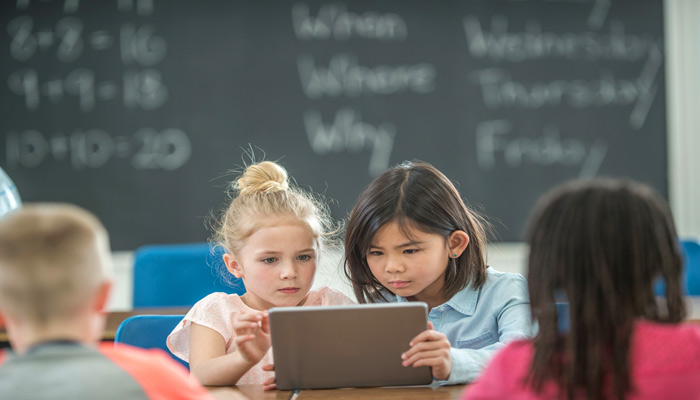
Screen time: Most children have no trouble concentrating when it comes to spending time on digital devices.
Historical research points to individuals’ different learning preferences or ‘styles’ as being more or less effective in this process. These include kinaesthetic learners (‘doers’); aural learners (‘listeners’) and visual learners (‘seers’). More recently, ‘readers and writers’ has been added to the list, recognising those for whom text and writing appears to be most effective.
For parents, it’s just as important to understand how your child learns as it is to know what should be learnt. Learning from home presents a useful opportunity to observe your child closely. Spend time with them while they learn and play. Take note of what seems to engage them the most - how they react to and interact with different stimuli, what generates high levels of concentration, how they respond to information delivered in different ways, and so on.
This knowledge is useful for working out the best type of learning experiences to provide for your child, and telling your child’s teacher about your observations might also help them learn better once they are back in the classroom.
Digital learning's big plus
Of course, most children love digital devices and have no trouble concentrating when it comes to them!
During the pandemic, online group interactions with their peers can be beneficial for some children who perform effectively when working with others. Learning is a social transaction and an interactive process, which means more than just interacting with sheets of paper or passively on a screen – talking to people about learning and problems they are having is incredibly important.
This is why there are merits in looking at online groups of kids working on tasks together – they can often learn just as well with each other as they can with a teacher! School is also socially important for kids, and while getting together online is not the same as face to face, it is still better than nothing.
Get your kids outside climbing a tree, kicking a ball, taking the dog for a walk or whatever you can do that is something different.
We also need to remember the importance of real-life interaction – becoming immersed in a ‘cyberbubble’ all day is not a good thing! Get your kids outside climbing a tree, kicking a ball, taking the dog for a walk or whatever you can do that is something different, to break up the screen time and school work.
Increasingly research is telling us too much screen time can be detrimental for everyone, especially young children. However, I’m not so sure this can be exclusively defined by hours and minutes. It’s not just how long you spend on a device, it’s what you do while you are spending it. Appropriate use is a matter of quality, not just quantity – and devices are just one part of a balanced range of experiences children should be exposed to.
Expert teachers are seldom recognised
Thinking about this in relation to schools, one quickly realises the complex and demanding job teachers have. One outcome of the pandemic is that parents, and society more broadly, may come to a new level of appreciation and understanding of what teachers do, and the complex nature of educating young people. In their classrooms will be up to 30 (or more) students of hugely diverse abilities, backgrounds, experiences and learning needs - each with their own unique combination of preferences that somehow need to be accommodated. Of course, achieving this for every student is a very difficult task.
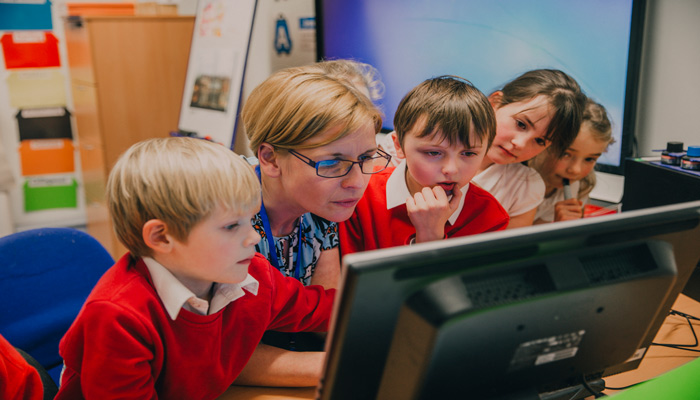
Experts: Teachers create programs rich in learing experiences to meet the needs and preferences of up to 30 students.
Through my research work in primary schools, I am privileged to work alongside some amazing teachers. Their principal concern is to do the best for their students, often in the most challenging of circumstances.
These teachers know their students – what makes them tick, what turns them on - and off, what challenges them, when to step in, and when to leave them to solve problems themselves. They are expert ‘readers’ of their class. They avoid the ‘one size fits all’ approach.
They are expert designers – thoughtfully crafting programs that include a variety of rich learning experiences to meet the needs and preferences of their students, enabling them to achieve and display their potential in different ways and forms. To me, this is quality teaching for quality learning.
Garry Falloon is Professor of STEM Education and Digital Learning in the Macquarie School of Education
This is an updated version of an article first published on September 3, 2018.

